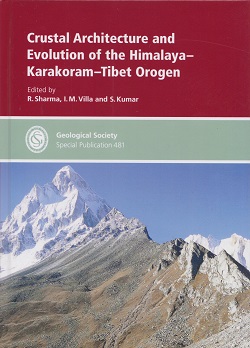 Geological expeditions in the Himalaya-Karakoram-Tibet (HKT) region began in the 1850s. Since then, geoscientists around the world have been determined to study and achieve a better understanding of the evolution and architecture of this youngest orogen on Earth. These studies have yielded many books and edited volumes with new and updated information every time. This new volume continues that trend, presenting new insights on the crustal architecture and evolution of the HKT Orogen.
Geological expeditions in the Himalaya-Karakoram-Tibet (HKT) region began in the 1850s. Since then, geoscientists around the world have been determined to study and achieve a better understanding of the evolution and architecture of this youngest orogen on Earth. These studies have yielded many books and edited volumes with new and updated information every time. This new volume continues that trend, presenting new insights on the crustal architecture and evolution of the HKT Orogen.
Apart from the editor’s introduction, the volume presents 17 research articles using various techniques of geological, geochemical and geophysical processes. A preferred approach is to address a region for its geological evolution and crustal architecture through its geological age. Given this, the chapters progress from present tectonic activities (e.g. the present crustal motion and a review on historical seismic events) to the evolution and crustal architecture of the orogen, which dates back to the post, during and pre collisional events.
The volume summarises the latest discoveries and research into the HKT Orogen, such as (i) the discovery of the back thrusts related to inherited structures (Garhwal Lesser Himalaya) (ii) first report on the alkaline schorlitic tourmaline from the Tso Morari Crystalline Complex (Ladakh) (iii) a new report on the Lazulite in the vicinity of Main Central Thrust (Kumaun Himalaya) (iv) a possible new precursory approach for the future earthquakes from the GNSS data of Everest Pyramid Lab (v) new Geochronological ages and (vi) the role of inherited structures on the evolution of the orogen.
Through different chapters, the book comprehensively deals with the geodynamics and kinematics of various features; e.g., High Himalayan Discontinuity and Main Himalayan Thrust. Further, this volume discusses the role of fluids in the geodynamic, geochemical and tectonic evolution in this region viz., the presence of slab driven fluids, Oligocene partial melts (Nepal) and the presence of partial melts in the HKT region from geophysical techniques and low salinity C-O-H fluids as fluid inclusions.
Apart from a few errors in text and figures, the authors and editors have prepared the volume beautifully and efficiently. This volume addresses the recent advancements in the geology of the Himalaya and Karakorum; however, it lacks in describing the same for Tibet. On balance, I suggest this book to be a valuable addition to the libraries of scholars of the HKT regions and also to the whole geoscience fraternity to widen their understanding of the geology of an evolving mountain chain.
Reviewed by R. Arun Prasath
CRUSTAL ARCHITECTURE AND EVOLUTION OF THE HIMALAYA-KARAKORAM-TIBET OROGEN
by Sharma, R., Villa, I. M., and Kumar, S. (eds) 2019. Published by The Geological Society, 386pp (hbk), Special Publication 481, ISBN: 978-1-78620-403-5 List Price: £120. W: www.geolsoc.org.uk/SP481